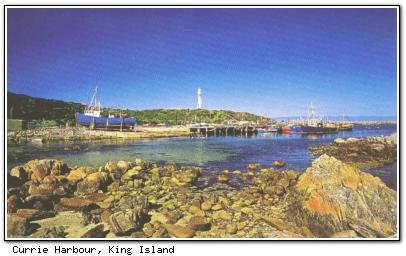  |
||||



|
King Island King Island is known nationally and internationally for its fine produce: cream, specialty cheeses, beef and rock lobster. Kelp is harvested from the shore and dried; it is then exported for use in products ranging from ice cream to cosmetics. Both the dairy and kelp factories are in the vicinity of King Island's largest town, Currie.
 With so many shipwrecks close to shore, King Island is a diver's paradise. Other activities offered on King Island are horseback riding, bushwalking, and fishing tours. Many beaches around King Island are excellent for surfing. For those inclined toward a more sedate holiday, the Pegarah Forestry Plantation, in the middle of the island between Currie and Grassy, provides photo opportunities amongst huge tree ferns and Tasmanian hardwoods. The Lavinia Nature Reserve is home to one of Tasmania's rarest bird species, the orange bellied parrot. A unique attraction is the calcified forest, where many years ago, forest was rapidly covered by sand dunes, which have since receded. A fairy penguin colony calls the Grassy area home. King Island was settled around 1800 by sealers. The lighthouse at Cape Wickham on the north of King Island is Australia's largest, and marks the most northerly point of Tasmania. Daily flights to King Island operate from Wynyard, Launceston and Melbourne. King Island has one 4-star and eight 3½-star accommodation facilities (RACT rated). © 1995-2010 |
|||